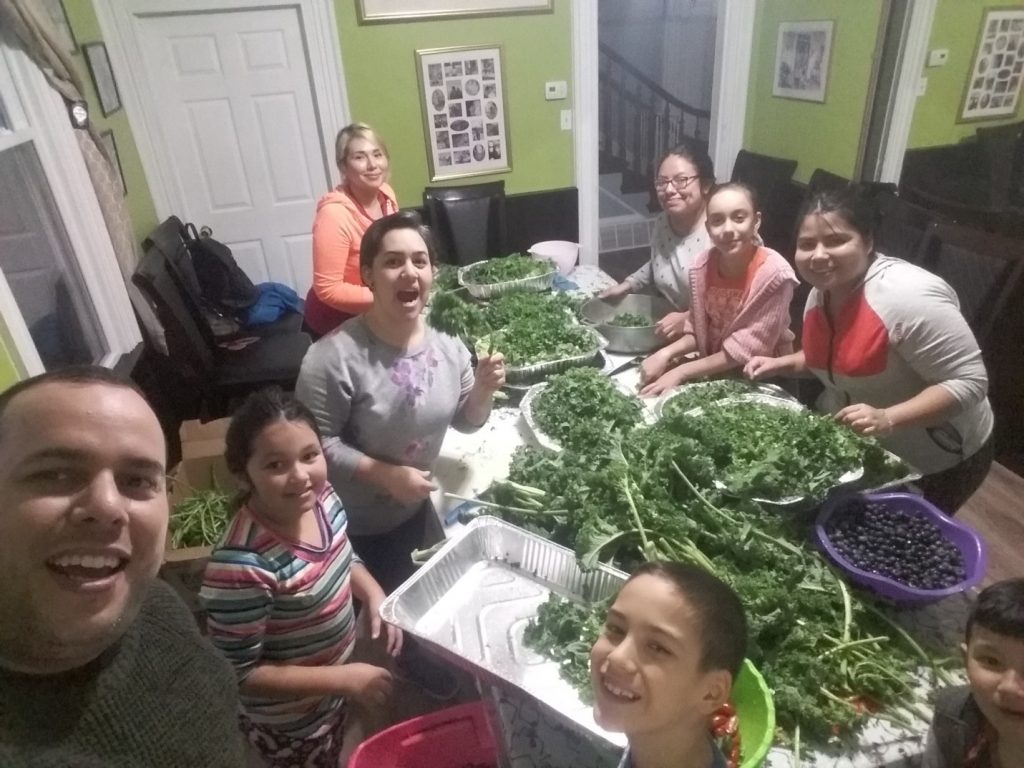Becoming a Family’s Ally: Q&A with Isai García, Family Advocate
In any team sport, the players on the team work together to practice and execute game strategy to achieve a shared goal of winning their games. While the players do the work, the team’s coach provides thoughtful direction, resources and feedback to help guide the players to reach their full potential, individually and as a team, to achieve their goals.
Similarly to a coach, the role of a Family Advocate is to provide families with direction, feedback and ongoing support with navigating resources as they work to accomplish their goals. Isai García is a trained Family Advocate with Unidos Para La Familia, a collaborative that works with immigrant, working-class families in Bridgeton, New Jersey. To Isai, having access to a trusted support system is an integral component to a families’ success.
Isai’s role as a service provider liaison and trusted life coach gives him a unique perspective into how the Whole Family Approach provides holistic support to bolster family stability. We had the chance to speak with him about what it means to be a Family Advocate and the unique value of this role in partnering with families to reach their goals.
What does it mean to be a Family Advocate?
Put simply, my role is to work with families to reach their full potential. Family Advocates work with families to articulate and realize goals they may not have considered or been able to realize so far. If a family is looking for housing support, for example, we can help connect them with rental assistance or even mortgage assistance programs they may never have known they were eligible for in the first place. But my role goes beyond that — I am also a mentor and social support system for families. They can meet with me and ask me questions about their personal situations, such as what services are eligible to them as undocumented immigrants, that they may not feel comfortable asking a traditional service provider.
Why is
the Family Advocate role an important tool to support families in achieving
their goals?
To me, accountability on all sides is a big differentiator between Family Advocates and traditional service providers. I see Family Advocates as an accountability partner to families. A family can visit a traditional service provider one time, ask questions and leave without making a plan to ever see that provider again. Similarly, a service provider does not necessarily have an obligation to follow through with that family if they do not choose to schedule recurring appointments. There is no accountability in that. By contrast, our job as Family Advocates is to stay connected with families’ goals and establish group accountability on an ongoing basis. We are accountable to the families, and they are accountable to us. We work together.
When you first begin working with a family, can you describe how the first meeting usually goes?
First, we schedule an informal meeting where families share basic information about themselves, and we present the full spectrum of services we can provide. We then schedule a second meeting where we conduct a formal intake survey with a series of diagnostic questions about the family’s children, housing situation, immigration status, mental and physical health, levels of education, whether they are employed and where they work, and many other questions that help us get a sense of a family’s holistic situation. This process provides families with space to elaborate on challenges they may be facing, even if they have not identified them as areas where they’d like support. It also helps us to determine what resources may be helpful to them. The survey questions can seem overly personal, but this is how we learn their story. It’s the first step toward building trust and shaping goals together. This intake process helps us to contextualize the situation the family is in, so we can approach goal setting together from a place of mutual understanding.
Can you provide an example of how a family initially describes their challenges and articulates their goals to you?
Most of the time, families are unsure how to articulate their goals on their own right away, or the goals they initially share with us are not the goals we end up working toward. It’s an iterative process driven by the family’s decisions. For example, a man came to us for support in earning his GED and signing up for an exam. During our intake meeting with him, we learned he had two children who lived in Philadelphia whom he hardly ever saw. We were able to connect him with a lawyer who helped increase his visitation time with his kids — an option he did not know he had and would never have known to ask for. He was able to earn his GED and take the exam he initially requested support with, but the biggest change for him since beginning to work with us is that his relationship with his two children is drastically improved.
How do you coordinate families’ goals and progress in collaboration with other service providers, teachers and other individuals or organizations working with the family to ensure all are working toward their overall family goals?
We work closely with all the organizations in the Unidos Para La Familia collaborative and constantly exchange relevant information about the families we work with. One interesting aspect of my role is that families often trust me more than other service providers because of the relationship we’ve built together, so I can collect information from families and, with the families’ permission, share that with other organizations. For example, we usually try to involve the families we work with who have teenagers to work with Families To College, another collaboration nearby , that works to prepare families to be college-ready through a whole-family mentoring program. When the mother in a recent family I worked with was not feeling comfortable with her family participating in the program, I was able to gather information about the program and share it with her in a way that made sense and encouraged her to participate.
What are the kinds of barriers to success the families you work with face? How do you work with them to overcome these barriers?
For the immigrant families I work with, assimilation can be a real challenge. Language and cultural barriers can prevent families from engaging with their communities and accessing the resources they need, making anything from using a library card to check out a book to seeking legal advice prohibitively difficult. It also means families may lack strong social support systems or connections with their community. On top of serving as the go-between connecting families with the services and resources they are eligible for, we also help them to assimilate to their new culture through language classes, community events and other means of encouraging them to interact with the community. In many cases, it involves showing a family they actually have many more connections and resources available to them than they were aware of.
Can you provide an example of a goal(s) a family set while working with you, and how you developed plans to help them accomplish those goals?
Recently, a man came to us because he and his family wanted to purchase a house and was hoping to qualify for a specific mortgage rate. After learning that he unfortunately was not a candidate for this new mortgage, we saw this as an opportunity to establish goals with his family around budgeting. He, his wife and their three children sat down with me to take an initial look at their spending and identify areas where the family could come together to make changes that would allow them to work toward an eventual goal of buying a home. We set small financial, trackable goals involving the whole family. For example, they set a goal to limit eating out at restaurants to once a month. They stuck with it. Fast forward several years, and the family purchased their first home in July 2019.
That’s an incredible story! Where is that family today? Have they accomplished their goals?
This family is now in maintenance, which means they have fulfilled their goals and are not actively pursuing another goal working with me. We continue to invite them to events, and we occasionally check in to ensure all is going well: the mortgage payments are on track, ensuring the family is not having any problems paying taxes, or anything else related to the original goals we worked on together. I also check in to see if anything new has come up. For example, the father in this family recently called me because his friend had invited him to go into business with him and he wanted my advice. This is an example of why building rapport with families is so important — you become a trusted source of support and advice for that family, even when you are no longer actively working with them to set and accomplish goals. Sometimes all people need is a trusted ear to talk through their thoughts with.

The Whole Family Approach exists to provide families with the tools to reach their full potential. How has your work with the families contributed to this?
The Whole Family Approach is so important for us because our work is all about equipping families to reach their full potential. This means looking at a family’s situation holistically, even if they come in for support in just one area. For example, a family may come to us only looking to enroll the parents in English classes. But when we first meet with that family, we look at the whole picture. How is the parents’ inability to speak English affecting their children’s performance in school, for example. Is that an area that needs attention as well? The Whole Family Approach equips us to ask these questions and look for opportunities that may not be top of mind for that family when they initially come to see us. A major distinction is that this approach holds families accountable to themselves. They set their goals, they work to achieve them, and we provide guidance and tools along the way.
What are some of the specific skills families build throughout their work with you?
In addition to connecting them to new resources, I try to equip families to take advantage of the support systems and tools already available to them in their communities. This includes tapping into the support they can receive from community centers, friends and even other family members. For example, a single mom may be accustomed to raising her kids alone and never consider that another of her kids, who is already an adult, may be available to come in and help raise the younger kids as the second caregiver. A neighbor can help with picking up kids from school. Staff members at local churches, community centers and other organizations can and will step in to help if you ask them. The support families receive does not have to be traditional support. People so often do not realize they have a network readily available at their fingertips. The Whole Family Approach helps families realize they can create a network within their family and friends where they can support each other. I think that is so important to the philosophy of the Whole Family Approach: the family is never alone.


